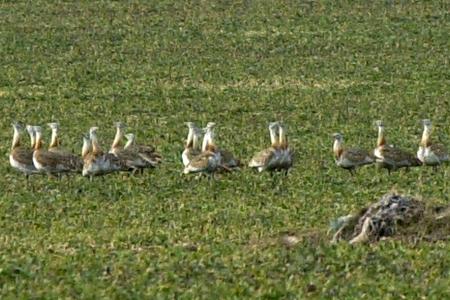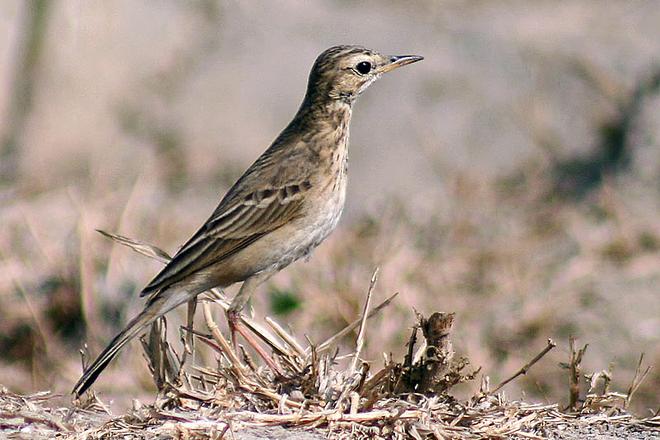In Slovakia, near the village of Mikušovce near Lučenec, a new species of bird has been observed - the Richard's Pipit. This is the second sighting of a new bird species this autumn after the sighting of the pink flamingo, which was recorded at the beginning of September near Trnava.
A new bird species of Slovak fauna - Richard's Pipit (Anthus richardii) - was observed in the Poiplie Bird Sanctuary.
"When I heard and later saw this bird during bird migration monitoring, I immediately knew it was something unusual,“ said Marian Mojžiš from the Slovak Ornithological Society/BirdLife Slovakia (SOS/BirdLife Slovakia). “According to the characteristic voice, which I managed to record with a voice recorder and additional observation, I finally determined the species."
The bird was observed during monitoring focused on the migration of the western marsh harrier (Circus aeruginosus), which is carried out as part of the LIFE IPORSEN project, which SOS/BirdLife Slovakia also implements in the Poiplie region for the purpose of improving the nesting and migration habitats of our nesting birds.
Richard’s pipits are larger songbirds, 17-20 cm in size, with a longer beak and long yellow legs. They are coloured inconspicuously, in brown tones on the top of the body and lighter on the belly and the lower part of the tail.

It is a migratory bird that breeds in Siberian meadow and grass habitats and winters in Southeast Asia. Only in recent years has the species become a regular autumn and winter visitor to Western Europe. Recent research shows that the birds found in south-west Europe are true migrants, with the same marked individuals returning to southern France in subsequent winters, and geolocation tracking has revealed that they originate from the western edge of the species' known breeding range.
They complete an amazing 6000 km journey from Central Asia through Eurasia, a very unusual long western journey unknown among other Siberian migratory birds. When flying to southwestern Europe, they must also fly over the territory of Slovakia, and sighting them had been expected, but not yet confirmed until now. This change in migration routes and wintering grounds is probably a new phenomenon that has only occurred in recent years.



 Illustrative stock photo (source: Wikimedia - I. Haryana)
Illustrative stock photo (source: Wikimedia - I. Haryana)